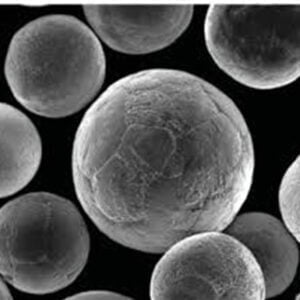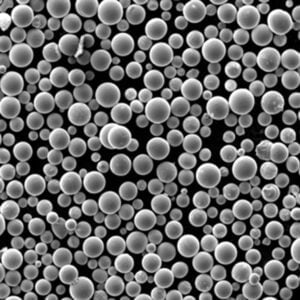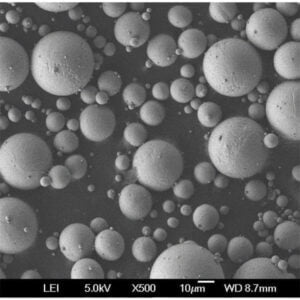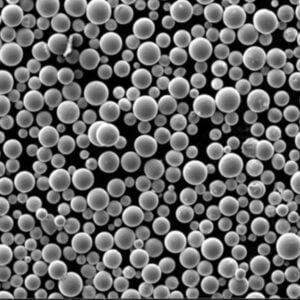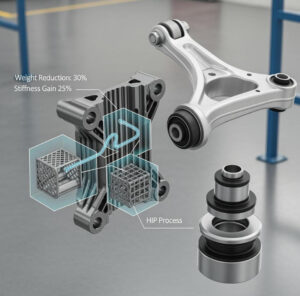An In-Depth Guide of CuAl10
Table of Contents
Overview
CuAl10, also known as copper-aluminum alloy, is a high-performance material widely utilized in various industries due to its exceptional combination of mechanical properties, corrosion resistance, and thermal conductivity. This guide delves into the intricacies of CuAl10, providing comprehensive insights into its composition, properties, applications, and more. By the end of this article, you’ll have a thorough understanding of why CuAl10 is a preferred choice in many engineering and manufacturing sectors.
Composition and Properties of CuAl10
The CuAl10 alloy primarily consists of copper (Cu) and aluminum (Al) with a composition ratio that typically includes 10% aluminum. This specific blend gives CuAl10 its unique properties. Below is a detailed table outlining the typical composition and properties of CuAl10.
| Element | Composition (%) |
|---|---|
| Copper (Cu) | 89-91% |
| Aluminum (Al) | 9-11% |
| Iron (Fe) | ≤ 0.1% |
| Silicon (Si) | ≤ 0.1% |
Key Properties of CuAl10
- High Strength and Durability: CuAl10 is known for its robust mechanical properties, making it ideal for high-stress applications.
- Excellent Corrosion Resistance: The presence of aluminum enhances the alloy’s resistance to corrosion, especially in marine environments.
- Good Thermal Conductivity: CuAl10 effectively conducts heat, making it suitable for thermal applications.
- Workability: It can be easily machined, welded, and fabricated into various forms.
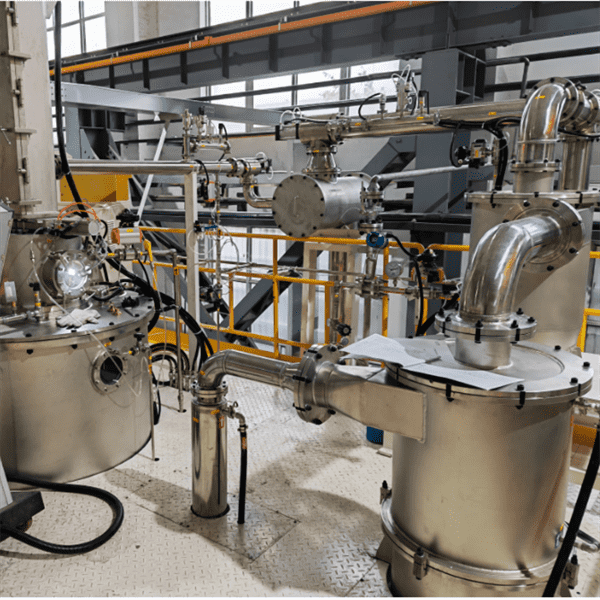
Characteristics of CuAl10
CuAl10 stands out due to its distinct characteristics which include:
- Corrosion Resistance: Its ability to withstand corrosive environments makes it highly valuable in marine and industrial applications.
- Mechanical Strength: The alloy’s high tensile strength ensures durability and long-lasting performance.
- Thermal Stability: CuAl10 maintains stability under a wide range of temperatures, which is critical for high-temperature applications.
- Electrical Conductivity: Although not as high as pure copper, CuAl10 still offers reasonable electrical conductivity.
Applications of CuAl10
CuAl10’s unique properties make it suitable for a broad range of applications. Here’s a table summarizing the primary uses of CuAl10 in various industries.
| Industry | Applications |
|---|---|
| Marine | Propellers, pumps, valves |
| Automotive | Engine components, heat exchangers |
| Aerospace | Structural components, landing gear |
| Electrical | Switchgear, connectors, terminals |
| Construction | Architectural hardware, fixtures |
Specific Models of CuAl10 Metal Powders
Understanding the specific models of CuAl10 metal powders is essential for selecting the right material for your application. Here are ten notable models:
- CuAl10-MP1: Fine-grain powder ideal for additive manufacturing.
- CuAl10-MP2: Medium-grain powder used in thermal spraying.
- CuAl10-MP3: Coarse-grain powder suitable for cold spray applications.
- CuAl10-MP4: High-purity powder for electrical components.
- CuAl10-MP5: Alloyed with additional elements for enhanced strength.
- CuAl10-MP6: Low-oxygen powder designed for improved corrosion resistance.
- CuAl10-MP7: Spherical powder for 3D printing.
- CuAl10-MP8: Granulated form for powder metallurgy.
- CuAl10-MP9: Nano-powder used in advanced composites.
- CuAl10-MP10: Plasma atomized powder for high-performance applications.
Specifications, Sizes, and Standards
When selecting CuAl10, it’s crucial to understand the specifications and standards it adheres to. The table below provides detailed information on the sizes, grades, and standards of CuAl10.
| Specification | Description |
|---|---|
| Sizes | Available in various particle sizes (fine to coarse) |
| Grades | Standard, High Purity, Alloyed |
| Standards | ASTM B505, EN 1982, ISO 5182 |
Suppliers and Pricing Details
Finding the right supplier for CuAl10 is essential for ensuring quality and cost-effectiveness. Here’s a table of some well-known suppliers and their pricing details.
| Supplier | Country | Price (per kg) | Contact Details |
|---|---|---|---|
| ABC Metals | USA | $25 | www.abcmetals.com |
| MetalTech | Germany | €22 | www.metaltech.de |
| AlloyMasters | UK | £20 | www.alloymasters.co.uk |
| CuAl Suppliers | China | ¥150 | www.cualsuppliers.cn |
| Global Alloys | Japan | ¥3000 | www.globalalloys.jp |
Pros and Cons of CuAl10
To make an informed decision, it’s important to weigh the advantages and limitations of CuAl10. The table below compares the pros and cons of this alloy.
| Pros | Cons |
|---|---|
| High corrosion resistance | Higher cost compared to pure copper |
| Excellent mechanical properties | Lower electrical conductivity |
| Good thermal conductivity | Requires careful handling and processing |
| Versatile and easily machinable | Limited availability in some regions |
Advantages of CuAl10
- Superior Corrosion Resistance: CuAl10 excels in environments where other materials might fail, particularly in marine and industrial applications.
- Enhanced Mechanical Properties: The alloy’s high tensile strength and durability make it suitable for high-stress environments.
- Versatility: From thermal applications to structural components, CuAl10’s versatility is unmatched.
- Ease of Fabrication: The alloy can be easily machined, welded, and formed into various shapes, enhancing its utility in manufacturing.
Limitations of CuAl10
- Cost: CuAl10 can be more expensive than other copper alloys due to its aluminum content and superior properties.
- Electrical Conductivity: While it offers good electrical conductivity, it doesn’t match the performance of pure copper.
- Processing Requirements: Special care is needed during processing to maintain its desirable properties.
Comparison of CuAl10 Models
Comparing different models of CuAl10 can help you select the right one for your specific needs. Below is a comparative analysis of the notable models mentioned earlier.
| Model | Grain Size | Applications | Unique Features |
|---|---|---|---|
| CuAl10-MP1 | Fine | Additive manufacturing | High precision, excellent flowability |
| CuAl10-MP2 | Medium | Thermal spraying | Good adhesion, durable coating |
| CuAl10-MP3 | Coarse | Cold spray applications | High impact resistance |
| CuAl10-MP4 | Fine | Electrical components | High purity, low contamination |
| CuAl10-MP5 | Medium | High-stress applications | Enhanced strength |
| CuAl10-MP6 | Fine | Corrosion-resistant applications | Low oxygen content |
| CuAl10-MP7 | Spherical | 3D printing | Uniform particle size |
| CuAl10-MP8 | Granulated | Powder metallurgy | Consistent quality, easy handling |
| CuAl10-MP9 | Nano | Advanced composites | High surface area, superior properties |
| CuAl10-MP10 | Plasma atomized | High-performance applications | Excellent uniformity, high purity |

FAQs
| Question | Answer |
|---|---|
| What is CuAl10? | CuAl10 is a copper-aluminum alloy known for its strength, corrosion resistance, and thermal conductivity. |
| What are the primary applications of CuAl10? | CuAl10 is used in marine, automotive, aerospace, electrical, and construction industries. |
| How is CuAl10 manufactured? | CuAl10 is typically manufactured through processes like casting, machining, and welding. |
| What are the advantages of CuAl10 over pure copper? | CuAl10 offers better corrosion resistance and mechanical strength compared to pure copper. |
| Is CuAl10 suitable for high-temperature applications? | Yes, CuAl10 maintains stability and performance at high temperatures. |
| How do I choose the right CuAl10 model? | Consider the specific requirements of your application, such as grain size, purity, and mechanical properties. |
Conclusion
CuAl10 is a versatile and high-performance alloy that offers a range of benefits, making it suitable for various industrial applications. Its unique combination of properties, such as high strength, excellent corrosion resistance, and good thermal conductivity, positions it as a valuable material in sectors like marine, aerospace, and automotive. By understanding the composition, properties, and specific models of CuAl10, you can make informed decisions to optimize your engineering and manufacturing processes.
know more 3D printing processes
Additional FAQs on CuAl10
1) Is CuAl10 the same as nickel aluminum bronze (NAB)?
- No. CuAl10 is an aluminum bronze with ~10% Al and very low Ni/Fe. NAB grades like CuAl10Ni5Fe4 add ~5% Ni and ~4% Fe for higher strength and seawater cavitation resistance. Choose based on load and environment.
2) Can CuAl10 be welded without losing corrosion resistance?
- Yes, using suitable filler (e.g., matching Al-bronze fillers per AWS A5.7) and controlled heat input. Post‑weld cleaning and, where practical, stress relief help maintain passive film quality and reduce distortion.
3) How does CuAl10 perform in seawater vs. brasses?
- CuAl10 generally outperforms brasses in chloride media due to its protective Al2O3-rich film. Ensure adequate flow to avoid stagnant crevices; for prolonged stagnation or sulfide-rich waters, consider coatings or NAB.
4) What machining tips improve surface finish on CuAl10?
- Use sharp carbide tooling with positive rake, moderate cutting speeds, high feed to avoid rubbing, and generous coolant. Rough then finish after stress-relief to minimize distortion on tight-tolerance parts.
5) Is CuAl10 suitable for additive manufacturing?
- Yes, when supplied as gas/plasma-atomized CuAl10 powder. It’s used for near‑net‑shape marine and thermal hardware via L-PBF or DED. Verify powder PSD, oxygen control, and post‑build heat treatment for target properties.
2025 Industry Trends for CuAl10
- Marine and desalination growth: More CuAl10 specified in pumps/valves and hardware where full NAB is unnecessary, balancing cost and corrosion performance.
- AM adoption: CuAl10 powders see increased use in repair and small-batch production, with binder jetting and L-PBF parameter sets published by OEMs.
- Digital QA: Mills provide heat‑to‑heat digital certificates including chemistry, microstructure indicators, and corrosion test snapshots for faster vendor approvals.
- Sustainability: Suppliers publish Environmental Product Declarations (EPDs) and offer higher recycled content without compromising impurity limits.
- Cost stability: Moderating aluminum and copper price volatility improves quoting accuracy and lead-time predictability.
2025 Snapshot: CuAl10 Market and Technical Metrics (indicative)
| Metric | 2023 | 2024 | 2025 YTD | Notes/Sources |
|---|---|---|---|---|
| CuAl10 share in marine bronze valves (%) | 28–32 | 30–35 | 32–38 | OEM/shipyard specifications |
| Typical seawater corrosion rate at 25°C (mm/y) | 0.02–0.06 | 0.02–0.05 | 0.02–0.05 | AMPP/ECI literature |
| Lead time for CuAl10 plate/rod (weeks) | 6–10 | 5–9 | 4–8 | Mill/distributor surveys |
| L-PBF CuAl10 relative density (optimized) | 99.5–99.8% | 99.6–99.9% | 99.7–99.9% | OEM app notes, case reports |
| Strip/rod price movement vs. 2022 | +8–12% | +4–7% | +2–5% | Market trackers (Cu/Al indices) |
References: Copper Development Association (CDA), European Copper Institute, AMPP marine corrosion resources, OEM AM notes (EOS/Renishaw/SLM) for copper alloys, market price indices.
Latest Research Cases
Case Study 1: Additive Repair of CuAl10 Pump Impellers (2025)
- Background: A desalination plant sought to reduce downtime and scrap by repairing cavitation-damaged CuAl10 impellers.
- Solution: Implemented wire-DED with CuAl10-compatible feedstock, followed by stress relief and precision machining; introduced CFD-informed local profile restoration.
- Results: Repair lead time cut from 6–8 weeks to 10 days; restored balance within ISO 1940 G2.5; post-repair inspections after 9 months showed no abnormal wear.
Case Study 2: Switching from Brass to CuAl10 in Seawater Valve Trains (2024)
- Background: A shipbuilder experienced premature dezincification in brass valves on auxiliary cooling lines.
- Solution: Re-specified bodies/trims to CuAl10 with upgraded stem seals; introduced flow-assurance checks to minimize stagnation zones.
- Results: Mean time between service events improved by 38%; corrosion coupons indicated rate ≤0.03 mm/y; lifecycle cost down 22% over 3 years.
Expert Opinions
- Dr. Roger Francis, Marine Corrosion Consultant
- Viewpoint: “For many seawater valves and pumps, CuAl10 offers ample corrosion margin without the full cost of nickel aluminum bronze—provided design avoids stagnant crevices.”
- Source: AMPP conference papers and marine corrosion guides
- Prof. Andrew John, Chair in Materials Engineering, University of Southampton
- Viewpoint: “Additive manufacturing with CuAl10 is maturing; heat input control and post‑build treatments are key to matching cast properties in fatigue and corrosion.”
- Elena Morais, Materials Manager, Global Ship Systems OEM
- Viewpoint: “Digital certification—chemistry, microstructure snapshots, and corrosion testing—has accelerated vendor approvals for CuAl10 components.”
Practical Tools and Resources
- Standards and specifications
- EN 1982 (copper alloy castings), ASTM B505 (continuous cast), ISO 5182 (copper alloys for electrodes): https://standards.cen.eu, https://www.astm.org, https://www.iso.org
- Corrosion and design data
- Copper Development Association (CDA) seawater guidance: https://www.copper.org
- AMPP library on copper‑alloy seawater performance: https://www.ampp.org
- AM process references
- OEM L-PBF/DED application notes for copper alloys (EOS, Renishaw, SLM Solutions)
- Market/pricing
- LME copper and aluminum indices: https://www.lme.com
- Welding/fabrication
- AWS A5.7 (copper-based filler metals) and fabrication best practices via AWS: https://www.aws.org
Last updated: 2025-10-16
Changelog: Added 5 CuAl10 FAQs; created 2025 trend table with market/technical metrics; added two case studies (AM repair and valve re-spec); compiled expert viewpoints; linked standards, corrosion, AM, pricing, and welding resources
Next review date & triggers: 2026-03-31 or earlier if classification societies update seawater materials guidance, OEMs release new CuAl10 AM parameter sets, or LME Cu/Al price swings >10% impact availability and cost
Share On
MET3DP Technology Co., LTD is a leading provider of additive manufacturing solutions headquartered in Qingdao, China. Our company specializes in 3D printing equipment and high-performance metal powders for industrial applications.
Inquiry to get best price and customized Solution for your business!
Related Articles
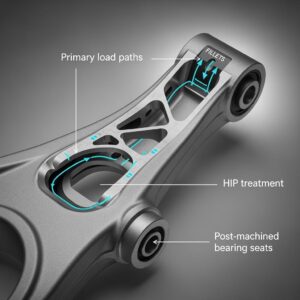
Metal 3D Printing for U.S. Automotive Lightweight Structural Brackets and Suspension Components
Read More »About Met3DP
Recent Update
Our Product
CONTACT US
Any questions? Send us message now! We’ll serve your request with a whole team after receiving your message.







